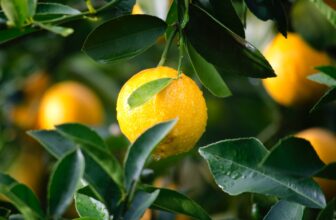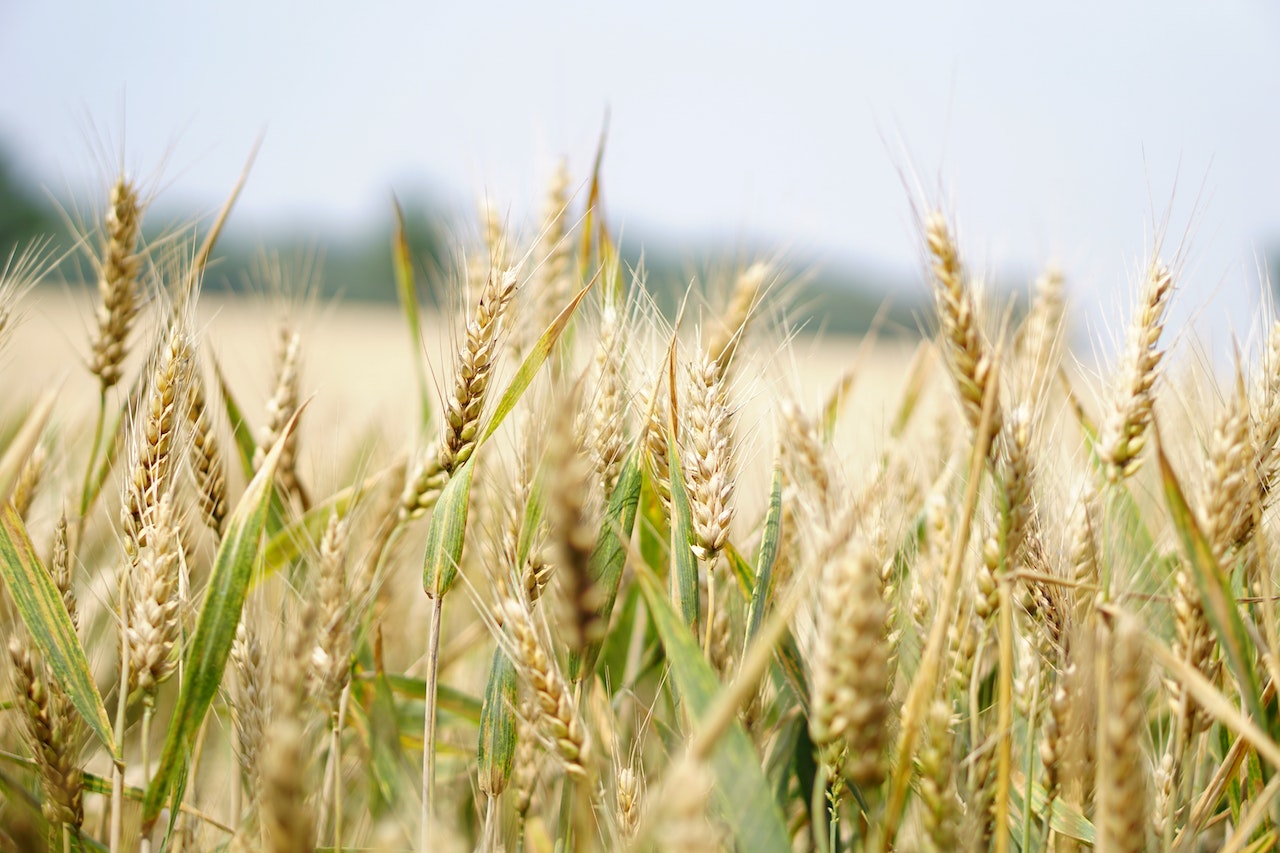
Table of Contents
Are you looking for a new and exciting crop to add to your garden this year? Look no further than khorasan wheat! Also known as Kamut, this ancient grain is making a comeback in the world of agriculture and for good reason.
Not only is it packed with nutrients and flavor, but it’s also a fun challenge to grow. Khorasan wheat has a rich, buttery flavor that is perfect for baking bread, making pasta, or even adding to salads. Plus, its long stalks and golden heads make for a picturesque addition to any garden.
So put on your gardening gloves and let’s dive into the world of khorasan wheat!
What is Khorasan Wheat?
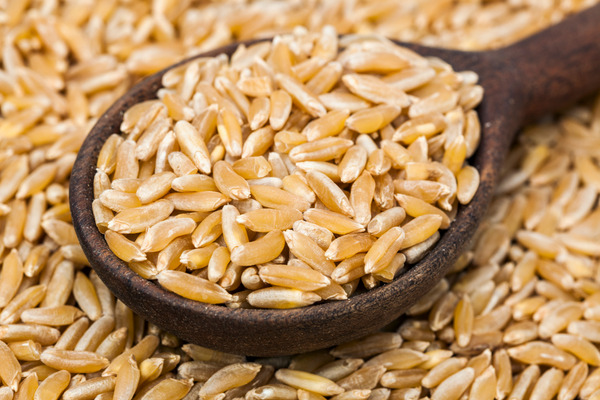
Khorasan wheat, also known as Kamut, is an ancient grain that’s believed to have originated in the Middle East. It’s a type of wheat that’s closely related to durum wheat, but has a larger grain size and a higher protein content. The name “Khorasan” comes from the Khorasan region of present-day Iran, where it’s thought to have originated.
Khorasan wheat was first introduced to the United States in 1949 by an American airman who brought back some seeds from Egypt. The grain gained popularity in the 1980s as a health food and alternative to modern wheat. Today, khorasan wheat is grown in various parts of the world, including the United States, Canada, Europe, and Australia.
One of the unique characteristics of khorasan wheat is that it’s a trademarked grain, meaning that only certain producers are allowed to use the Kamut brand name. This is to ensure that the grain is grown using organic and sustainable practices, and that it’s not genetically modified or crossbred with other types of wheat.
Khorasan wheat has a rich, buttery flavor and is known for its nutritional benefits. It’s higher in protein, minerals, and vitamins than modern wheat, and is also easier to digest for some people. It can be used in a variety of recipes, including bread, pasta, and cereal. While it may be a bit more expensive than modern wheat, many people believe that the flavor and nutritional benefits are well worth the investment.
Uses of Khorasan Wheat
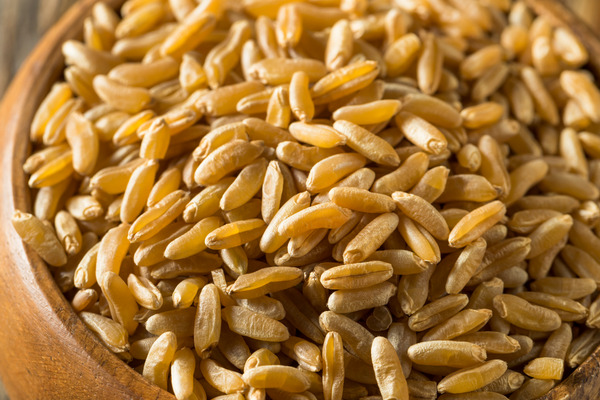
Khorasan wheat has a variety of uses in cooking and baking. Here are some of the most common uses:
- Bread: Khorasan wheat flour is often used to make bread due to its high protein content and nutty flavor. It can be used in a variety of bread recipes, including sourdough, whole grain, and artisan breads.
- Pasta: Khorasan wheat flour is also commonly used to make pasta. The grain’s large size and high protein content make it ideal for creating a chewy and flavorful pasta.
- Cereal: Khorasan wheat can be cooked and eaten as a hot cereal, similar to oatmeal. It can also be used in granola and other breakfast cereals.
- Baked goods: In addition to bread, khorasan wheat flour can be used in a variety of baked goods, including cookies, muffins, and cakes.
- Snacks: Khorasan wheat can be popped like popcorn and seasoned with herbs and spices for a healthy and flavorful snack.
- Side dishes: Khorasan wheat can be used as a side dish, similar to rice or quinoa. It can be cooked in a variety of ways, including boiled, steamed, or roasted.
Overall, khorasan wheat is a versatile ingredient that can be used in a variety of recipes. Its nutty flavor and nutritional benefits make it a popular choice among health-conscious cooks and bakers.
Pros and Cons of Growing Khorasan Wheat
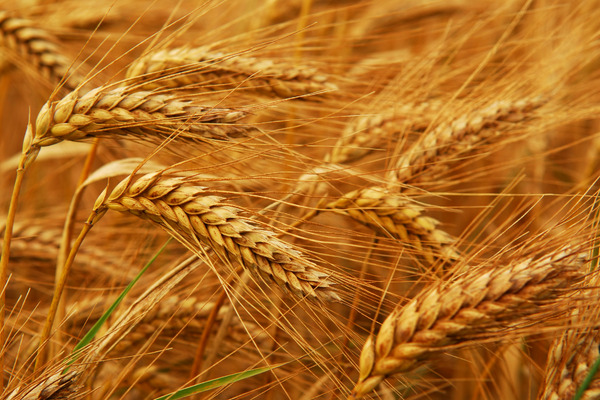
Before you decide to grow your own Khorasan wheat at home, you might want to weigh the pros and cons. Let’s take a look.
Pros:
- Nutritional benefits: Khorasan wheat is higher in protein, minerals, and vitamins than modern wheat, making it a popular choice for health-conscious individuals.
- Hardy crop: Khorasan wheat is resistant to many pests and diseases, which means it requires less pesticide and herbicide use than some other crops, making it a more sustainable option.
- Delicious flavor: Khorasan wheat has a nutty flavor that adds a delicious twist to a variety of recipes.
- Unique market value: Khorasan wheat is a specialty crop, which means it can fetch a higher price at market than some other crops.
Cons:
- Water and nutrient requirements: Khorasan wheat requires more water and nutrients than some other crops, which can be challenging in areas with limited resources or drought conditions.
- Lower yield per acre: Khorasan wheat can be more expensive to grow than modern wheat due to its lower yield per acre.
- Market demand: While khorasan wheat has a unique market value, it may be more difficult to find buyers for this specialty crop than for more common crops like wheat and corn.
- Growing conditions: Khorasan wheat may not thrive in all growing conditions, as it prefers cooler temperatures and well-draining soil.
How to Grow Khorasan Wheat – Step by Step
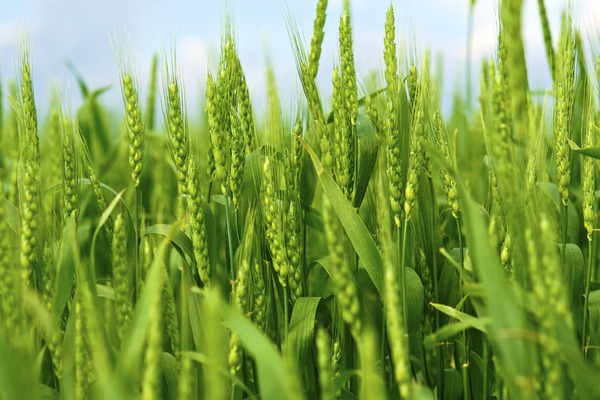
1. Soil Preparation
Preparing the soil for planting khorasan wheat is an important step to ensure that your crop thrives. First, you’ll want to choose a location with well-draining soil. You don’t want the soil to be too dry or too wet, as this can affect the growth of the plants. Once you’ve selected the location, it’s time to prepare the soil.
The first step is to remove any weeds or debris from the area. This will reduce competition for nutrients and water and prevent unwanted plants from growing alongside your khorasan wheat. Next, use a tiller or a garden fork to loosen the soil to a depth of 6-8 inches. This will help to break up any compacted soil and create a loose, friable surface that’s ideal for planting.
After you’ve tilled the soil, it’s time to add compost or other organic matter to improve soil fertility. This can be done by spreading a layer of compost or manure over it and then tilling it in to a depth of 2-3 inches. This will help to add nutrients to the soil and improve its structure, making it easier for the khorasan wheat roots to penetrate.
2. Seed Selection
When choosing seeds, there are a few things to keep in mind to ensure that you’re getting high-quality seeds that will produce healthy, vigorous plants.
First, it’s important to choose seeds from a reputable supplier. Look for a supplier who specializes in khorasan wheat and who has a reputation for providing high-quality seeds. You can also ask other farmers or gardening enthusiasts for recommendations.
Next, consider the specific variety of khorasan wheat that you want to plant. There are many different varieties of khorasan wheat available, each with its own characteristics and growing requirements. Some varieties are better suited to certain climates or soil types than others, so it’s important to choose a variety that is well-suited to your specific growing conditions.
When selecting seeds, look for seeds that are clean and free of debris. Seeds that are discolored, damaged, or appear moldy or diseased should be avoided, as they may not germinate or may produce weak, unhealthy plants.
Finally, consider the age of the seeds. Khorasan wheat seeds are viable for several years if stored properly, but older seeds may have lower germination rates than fresh seeds. If you’re not sure about the age of the seeds, it’s a good idea to perform a germination test before planting to ensure that the seeds are still viable.
3. Planting the Khorasan Seeds
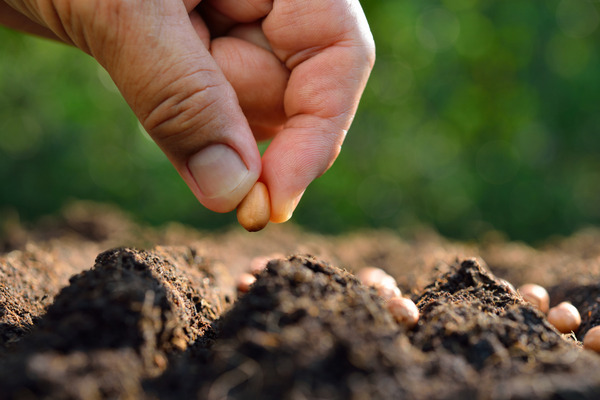
Planting khorasan wheat seeds in already prepared soil is a fairly straightforward process. Here are some simple steps to get you started.
First, create furrows or rows in your prepared soil with a hoe or rake. The rows should be spaced apart according to the instructions for your specific variety of khorasan wheat. The depth of the furrows will depend on the size of the seeds, but a general rule of thumb is to plant the seeds at a depth that is roughly twice the size of the seed.
Next, sprinkle the khorasan wheat seeds along the furrows, being careful not to overcrowd the seeds. For best results, try to space the seeds evenly along the rows. If you have a lot of seeds, it may be helpful to use a seed spreader or seeder to distribute the seeds evenly.
Once you’ve planted the seeds, cover them with soil, being sure to pack the soil down gently to ensure good seed-to-soil contact. This will help the seeds to germinate more quickly and establish themselves in the soil.
Finally, water the seeds well, being careful not to wash away the soil or the seeds. Keep the soil moist but not waterlogged, and continue to water regularly as the seeds germinate and begin to grow.
With a little care and attention, your khorasan wheat seeds will soon begin to sprout, and before you know it, you’ll have a healthy, thriving crop of khorasan wheat ready for harvest.
4. Watering and Fertilization
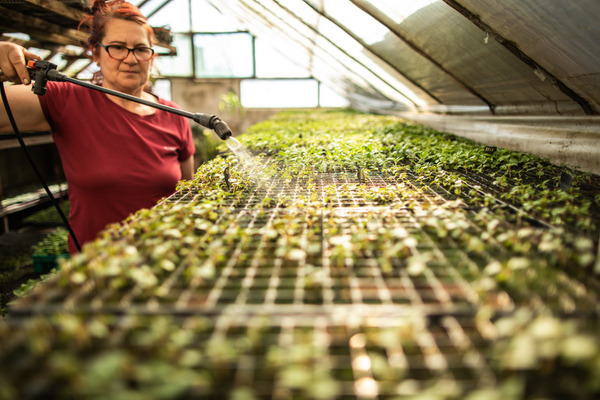
Khorasan wheat is a hardy crop that doesn’t require a lot of watering and fertilization, but it does need some care and attention to thrive.
In terms of watering, khorasan wheat prefers moist but not waterlogged soil. It’s best to water the crop deeply and infrequently, rather than giving it frequent shallow waterings. During the early stages of growth, it’s important to keep the soil consistently moist to encourage the seeds to germinate and establish themselves. Once the plants are established, you can gradually reduce the frequency of watering, but be sure not to let the soil dry out completely.
When it comes to fertilization, khorasan wheat doesn’t need a lot of extra nutrients, as it is adapted to growing in low-nutrient soils. However, a moderate amount of fertilizer can help to promote healthy growth and a good yield. Before planting, it’s a good idea to add some compost or well-rotted manure to the soil to provide some extra nutrients.
During the growing season, you can use a balanced fertilizer (such as a 10-10-10) to give the plants a boost. Be sure to follow the instructions on the fertilizer package carefully, as over-fertilizing can be harmful to the plants.
Khorasan wheat requires consistent moisture throughout the growing season, so water the plants regularly, especially during periods of drought. Apply a balanced fertilizer before planting, and consider a side-dressing of nitrogen fertilizer when the plants are about 6 inches tall.
5. Weed Control
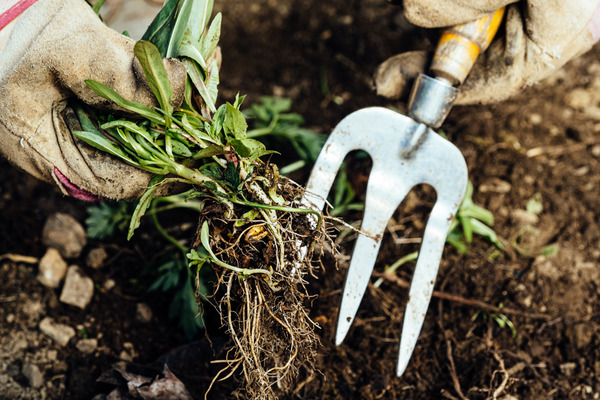
Weeds are a common problem for any crop, and khorasan wheat is no exception. However, there are several strategies you can use to control weeds and keep your khorasan wheat crop healthy and productive.
One effective method of weed control is to use mulch. Covering the soil around the plants with a layer of organic material such as straw or leaves can help to prevent weed seeds from germinating and taking root. In addition, the mulch helps to retain moisture in the soil and provides a slow-release source of nutrients as it decomposes.
Another way to control weeds is to use a hoe or cultivator to remove them manually. This can be a bit of a labor-intensive process, but it can be effective if you stay on top of the weeding regularly.
Finally, you can also use herbicides to control weeds. However, it’s important to be careful when using herbicides, as they can be harmful to the environment and to other plants. Always follow the instructions on the label carefully, and consider using organic or natural herbicides if possible.
6. Disease and Pest Control
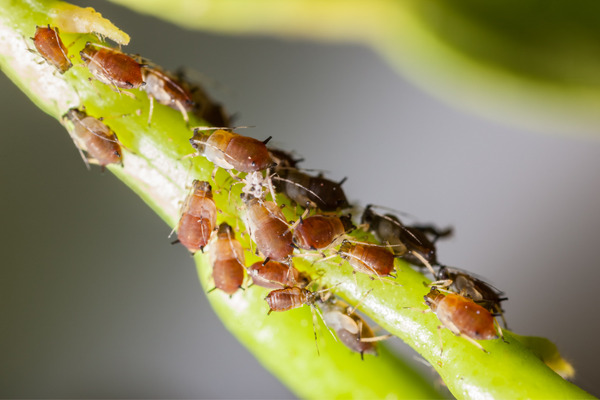
Like any crop, khorasan wheat can be vulnerable to certain diseases and pests that can impact its growth and yield. Here are some of the most common issues that you may encounter when growing khorasan, and some solutions for addressing them:
Wheat Stem Sawfly
This is a pest that can damage the stems of khorasan wheat, leading to reduced yields and plant death. To prevent wheat stem sawfly infestations, it’s important to rotate your crops regularly and use insecticides if necessary.
Fusarium Head Blight
This is a fungal disease that can cause scabby, discolored heads on khorasan wheat plants. To prevent fusarium head blight, it’s important to plant disease-resistant varieties of khorasan and to rotate your crops regularly. You can also use fungicides to control the spread of the disease.
Stripe Rust
This is a fungal disease that can cause yellow streaks on khorasan wheat leaves and reduce yield. To prevent stripe rust, it’s important to plant disease-resistant varieties of khorasan and to monitor your crop regularly for signs of the disease. If you do detect stripe rust, you can use fungicides to control its spread.
Aphids
These are small insects that can feed on the sap of khorasan wheat plants and cause stunted growth and reduced yield. To prevent aphid infestations, it’s important to monitor your crop regularly and use insecticides if necessary.
Grasshoppers
These insects can feed on the leaves and stems of khorasan wheat plants, leading to reduced yields and plant death. To prevent grasshopper infestations, it’s important to monitor your crop regularly and use insecticides if necessary.
Monitor the khorasan wheat plants for signs of pests or diseases, and take action if needed. Avoid overuse of pesticides and herbicides, which can harm beneficial insects and reduce the sustainability of your crop.
7. Harvesting Khorasan Wheat
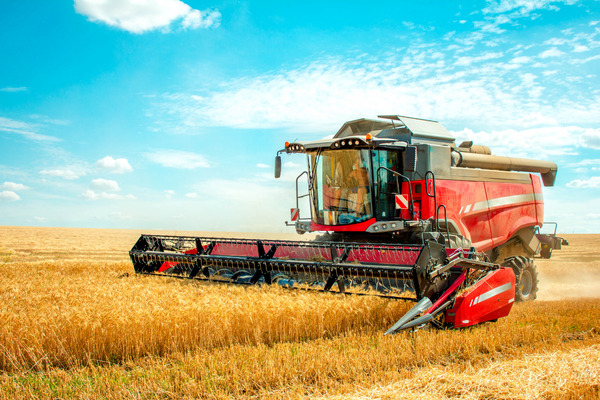
Harvesting khorasan wheat is an exciting time for any farmer or gardener. You’ve worked hard all season to get your crop to this point, and now it’s time to reap the rewards. But how do you go about harvesting khorasan wheat?
Firstly, you need to ensure that the crop is ripe. This means that the stems and heads of the wheat should be golden brown, and the seeds should be hard and dry. Once you’ve determined that the crop is ready to be harvested, it’s time to start cutting.
You can use a sickle or a scythe to cut the stems just above ground level. If you have a large crop, you can also use a combine harvester. Whichever method you choose, be sure to cut the wheat as cleanly as possible, so as not to damage the heads.
After you’ve cut the wheat, it’s time to dry it. You can do this by laying it out in the sun for a few days or using a dehydrator. Once the wheat is dry, you can remove the heads from the stems and store them in a cool, dry place until you’re ready to use them.
Harvesting khorasan wheat may seem like a lot of work, but it’s worth it when you taste the delicious, nutty flavor of this ancient grain. So get out there and start harvesting!
Interesting Facts about Khorasan Wheat
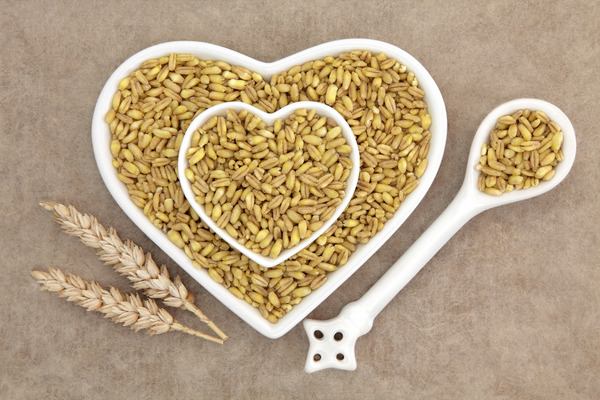
- Khorasan wheat is believed to be one of the oldest forms of wheat in the world, dating back over 6,000 years.
- It’s also known as “Pharaoh’s wheat” because it was supposedly found in the tombs of ancient Egyptian pharaohs.
- Khorasan wheat is higher in protein than modern wheat and contains all nine essential amino acids.
- Unlike modern wheat, khorasan wheat is not hybridized and has never been genetically modified.
- Khorasan wheat has a unique nutty flavor that makes it a popular ingredient in baked goods and other dishes.
- It has a low gluten content, making it a good alternative for people with gluten sensitivities.
- Khorasan wheat is more tolerant of drought and heat than modern wheat, making it a great crop for dry regions.
- It’s also rich in minerals like zinc, magnesium, and selenium.
- Khorasan wheat has been found to have anti-inflammatory properties, which may be beneficial for people with chronic inflammation.
- The cultivation of khorasan wheat has been shown to have a positive impact on soil health, due to its deep root system and ability to fix nitrogen.
FAQs about Growing Khorasan Wheat
Khorasan wheat should be planted in the fall, about 6-8 weeks before the first frost.
Khorasan wheat seeds should be planted about 1-2 inches deep in the soil.
Khorasan wheat should be watered regularly, about 1-2 inches per week, depending on the climate and soil conditions.
Khorasan wheat does not require heavy fertilization, but a light application of nitrogen-rich fertilizer can help it grow better.
Weeds can be controlled in khorasan wheat fields by hand weeding, using mulch or cover crops, or applying herbicides.
Khorasan wheat is ready to harvest when the kernels are hard and the stems have turned yellow and dry.
Khorasan wheat can be harvested using a combine or by hand with a scythe or sickle.
Khorasan wheat can be affected by pests such as aphids and armyworms, and diseases such as powdery mildew and leaf rust.
Pests and diseases can be prevented by using disease-resistant seed varieties, crop rotation, and proper soil management practices.
Yes, khorasan wheat seeds can be saved for future planting, but they should be properly dried and stored in a cool, dry place.
Wrapping Up
Growing khorasan wheat can be a fun and rewarding experience for farmers and home gardeners alike. While it may not be the easiest crop to grow, with a little bit of patience and care, the rewards can be plentiful.
So, whether you’re looking to try your hand at growing a unique and ancient grain or simply interested in adding a nutritious ingredient to your diet, khorasan wheat is definitely worth considering. With a bit of hard work, you can enjoy the satisfaction of growing your own food and sharing it with your loved ones. So why not give it a try and see what delicious delights await you with this golden grain?






